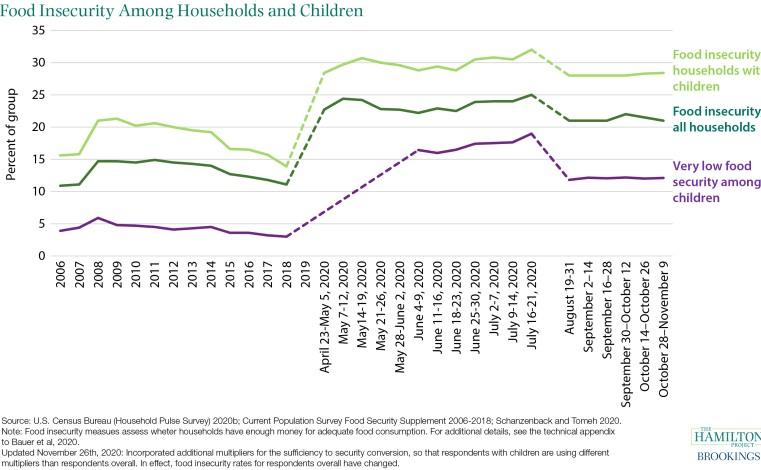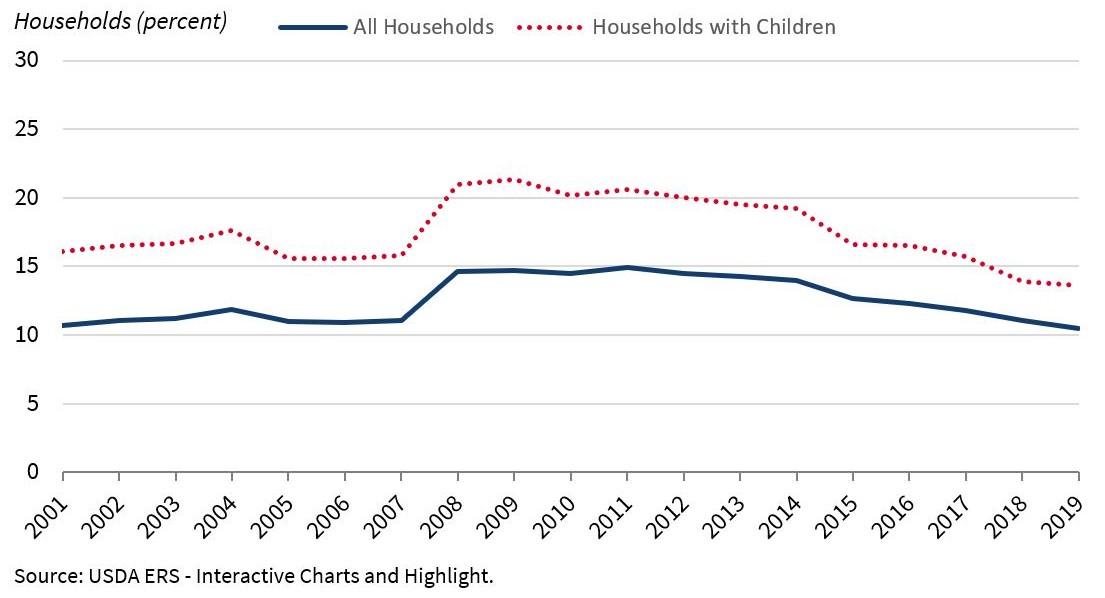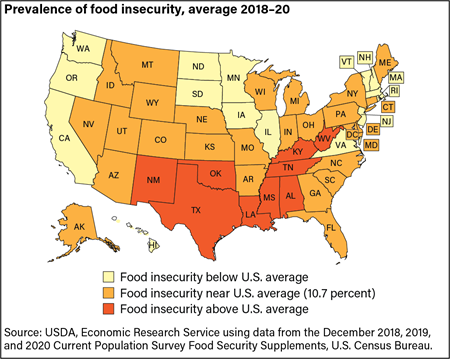Food deprivation in the United States – as well as in the world – is caused by a number of complex socio-economic factors. Unfortunately, the global pandemic and its effects added one more layer of depth to this problem (World Health Organization, 2021). In 2020, around 38 million Americans – more than 11,5 million children included – suffered from food deprivation (WhyHunger, n.d.). This shows only a slight increase from the numbers released pre-pandemic – 35 million Americans with 1 million less children in 2019. That leads one to the conclusion that the issue can be considered a major one.

It is evident that hunger does not affect all the population groups equally: some struggle more than others and it needs to be paid attention to when searching for solutions. Epidemiological perspective will help determine the occurrence and severity of the problem, as well as the target groups. According to WhyHunger (n.d.), a national average is 10,5% – and the disproportion of impact on Black (around 22%) and Latina (around 17%) households is striking, especially in comparison with white ones (7%). Indigenous communities have experienced food insecurity too: WhyHunger (n.d.) states that in 2020, more than 60% of areas with majority of Native populations – in the United States included – were affected by the issue. Additionally, almost 15% of American households with children suffer from hunger, with that rate skyrocketing to 40% when a household is a single-parent one (WhyHunger, n.d.). Diagrams retrieved from Bauer (2020) and Rouse and Restrepo (2021) – Figures 1 and 2 correspondingly – demonstrate how these households have always been slightly more vulnerable as compared to all households.

When it comes to the issue affecting different geographical areas, these vary considerably from state to state. Economic Research Service (2021) have been combining data for three years – from 2018 to 2020 included – and were able to provide reliable statistics. Estimated food insecurity prevalence rates over this period fluctuated from almost 6% in New Hampshire to more than 15% in Mississippi. With food security being extremely low, these ranged from a little over 2% in Minnesota to 6,5% in Louisiana (Economic Research Service, 2021). Figure 3 demonstrates it on a map, with Southern and Midwestern states being the most affected ones.

It has been estimated that poverty is the leading cause of hunger in the world. However, Bread (n.d.) states that this is true regardless of how rich the country is and in what areas people live. The income of those who suffer from hunger equals to approximately $1,90 or less, which is simply not enough to get by in many poor countries (Bread, n.d.). In rich ones – such as the United States – the numbers might be bigger but the lack of jobs or small salaries is what causes poverty of people living in areas with better economies. Additionally, it is to be noted that food insecurity’s rates tend to decrease with the level of education. According to World Hunger 2021: Key Facts and Statistics (n.d.), American households led by a family member with secondary education exhibited lower levels of food insecurity (almost 25%) in comparison with households whose members had no formal education (nearly 80%) or primary education (more than 50%). Seeing how lack of education is the direct cause of poverty, these statistics can be rightfully considered significant.
In terms of the severity of the issue, there has been research conducted on mortality rates from food deprivation. According to Economic Research Service (2021), four ranges of a continuum established to determine food insecurity are divided into two food secure and two food insecure ones. In an analysis of food insecurity, those who reported extremely high levels of it were twice as likely to die as those who had total food security (Walker et al., 2019). Surveillance methods usually include a household responding to sets of questions regarding experiences and behaviors connected to difficulties of meeting food needs.
Ecological perspective of the issue helps in looking beyond the statistics and into the political, economic and environmental conditions of the issue. According to Essel and Courts (2018), the causal relationship between hunger and death can be understood with the help of the following framework: hunger – food – nutrition – immunity – the likelihood of infection – mortality. Deleterious effects of the root cause summarily cause the outcome effect (hunger to mortality). As per Sen (2019), hunger is caused by basic modes of producing and distributing resources, with unbalanced food production and/or uneven distribution of people’s desires and needs leading to hunger among the population. Hunger manifests itself mainly in three forms: shortage of food, food poverty and food deprivation (Fisher, 2018). These forms can occur to any person or population, individually or sequentially. Food shortages take place in cases of a sudden drop in food production on the market, disrupting the food supply chain of a certain population and causing exceptionally high prices (lack of accessibility due to food poverty), eventually leading to severe nutritional deficiencies among this population group due to malnutrition (food deprivation). All of these factors are socially stipulated, economically sustained and politically motivated and cannot be determined solely by individual causes.
When it comes to the ecological factors influencing hunger, estimates are depressing. According to Mukerji (2019), rising temperatures, water scarcity, high concentrations of CO2 in the atmosphere and extreme natural occurrences such as (floods, droughts, and heat waves) will all negatively affect food production. Yields of some subsistence crops, for instance, wheat and maize, are already declining due to extreme occurrences, outbreaks of crop diseases and reduced resources of water. According to Mukerji (2019), this is the case with some regions of the United States as well as with other areas of the world. Considering that the projected effects differ depending on crops and regions as well as adaptation scenarios, farmers are in need of applying area-specific measures of adaptation (World Hunger 2021: Key Facts and Statistics, n.d.). While from it is estimated that many farms fall under the climate change impacts, the specific effects widely vary across regions, and the potential for adaptation differs.
On a federal level, hunger and food issues in the United States are addressed by SNAP – Supplementary Food Assistance Program, providing resources for those in need to purchase home for its preparation and consumption. Schanzenbach (2021) states that the program supplements enough cash resources so that between these resources and other incomes they have, the family could have a healthy and sufficient diet. Back in 2018, the Farm Bill was set to revise Supplemental Nutrition Assistance Program’s (SNAP) requirements for working (Economic Research Service, 2019). That means that to be qualified for getting food an individual had to be employed. That, in Moran’s (2018) opinion, ignored the fundamental reason for having food-based welfare to begin with and exacted a toll on the program’s purpose. Even though the requirements were not fulfilled, according to De Faria (2021), anti-hunger advocates still criticize the current Farm Bill for its lack of race-consciousness and general inefficient arrangement. Therefore, one can say that political decisions and the government’s actions help reinforcing hunger in the country.
References
Bauer, L. (2020). Hungry at Thanksgiving: A Fall 2020 update on food insecurity in the U.S. Brookings. Web.
De Faria, M. (2021). The next Farm Bill can build a more equitable SNAP program and food system. Results. Web.
Economic Research Service, U.S. Department of Agriculture. (2019). Agriculture Improvement Act of 2018: Highlights and Implications. Web.
Economic Research Service, U.S. Department of Agriculture. (2021). Food Security in the U.S. Web.
Essel, K., & Courts, K. A. (2018). Epidemiology and Pathophysiology of Food Insecurity. In Identifying and Addressing Childhood Food Insecurity in Healthcare and Community Settings (pp. 1-21). Springer, Cham. Web.
Fisher, A. (2018). Big hunger: The unholy alliance between corporate America and anti-hunger groups. MIT Press.
Just the facts (n.d.). WhyHunger. Web.
Moran, R.L. (2018). Why American policy is leaving millions hungry. Washington Post. Web.
Mukerji, R. (2019). Climate change and hunger. Global Hunger Index. Web.
Rouse, C.C., & Restrepo B. (2021). Federal income support helps boost food security rates. White House. Web.
Schanzenbach, D. (2021). Fighting hunger in the U.S. EconoFact. Web.
Sen, A. (2019). The political economy of hunger: On reasoning and participation. Common Knowledge, 25(1-3), 348-356. Web.
Walker, R. J., Chawla, A., Garacci, E., Williams, J. S., Mendez, C., Ozieh, M. N., & Egede, L. E. (2019). Assessing the relationship between food insecurity and mortality among US adults. Annals of Epidemiology, 32, 43-48. Web.
World Health Organization. (2021). UN report: Pandemic year marked by spike in world hunger. Web.
World Hunger 2021: Key Facts and Statistics. (n.d.). Action Against Hunger. Web.